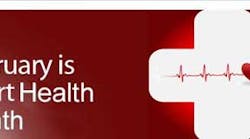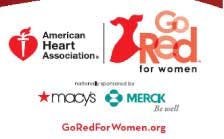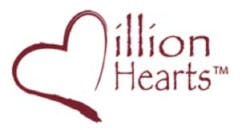Heart Disease is Responsible for Nearly One-Third of Deaths Worldwide
Did you know an estimated 17 MILLION people die of cardiovascular disease (CVD) globally every year?
Cardiovascular disease is among the top three diseases in men and women worldwide. According to the World Health Organization, the burden of coronary heart disease is meant to increase by nearly 43% globally from 1990 to 2020.
To urge Americans to join the battle against these diseases, since 1963, the U.S. Congress has required the President to proclaim February "American Heart Month." The American Heart Association (AHA) led initial efforts to develop an annual American Heart Month.(1)
Each year, the AHA, in conjunction with the Centers for Disease Control and Prevention, the National Institutes of Health, and other government agencies, brings together the most up–to–date statistics on heart disease, stroke, other vascular diseases, and their risk factors and presents them in its Heart Disease and Stroke Statistical Update. The Statistical Update is a valuable resource for researchers, clinicians, healthcare policy makers, media professionals, the lay public, and many others who seek the best national data available on disease morbidity and mortality and the risks, quality of care, medical procedures and operations, and costs associated with the management of these diseases in a single document.(2)Heart Disease and Stroke Statistics - 2013 Update: A Report from the American Heart Association is available for viewing.(2)Signs of a Heart Attack in Women
1. Uncomfortable pressure, squeezing, fullness or pain in the center of your chest. It lasts more than a few minutes, or goes away and comes back.
2. Pain or discomfort in one or both arms, the back, neck, jaw or stomach.
3. Shortness of breath with or without chest discomfort.
4. Other signs such as breaking out in a cold sweat, nausea or lightheadedness.
5. As with men, women’s most common heart attack symptom is chest pain or discomfort. But women are somewhat more likely than men to experience some of the other common symptoms, particularly shortness of breath, nausea/vomiting and back or jaw pain.
If you have any of these signs, don’t wait more than five minutes before calling for help. Call 9-1-1. Get to a hospital right away.(5)
Also know the signs of stroke and TIAs (transient ischemic attacks):
1. Sudden numbness or weakness of the face, arm or leg, especially on one side of the body
2. Sudden confusion, trouble speaking or understanding
3. Sudden trouble seeing in one or both eyes
4. Sudden trouble walking, dizziness, loss of balance or coordination
5. Sudden severe headache with no known cause(5)
Learn about health risk factors: cholesterol; diabetes; heart attack and stroke; and high blood pressure. Also learn about healthy behaviors, such as: being active; body mass index (BMI); healthy eating; stopping smoking; and share the facts self-test.(5)
Remember, heart disease is the leading cause of death for both men and women, but heart disease is preventableandcontrollable.(6) Have a plan for prevention, and share information about heart disease with your patients. Visit 28 Days to a Healthier Heart, and follow the Million Hearts initiative, a national initiative to prevent 1 million heart attacks and strokes over five years. Million Hearts brings together communities, health systems, nonprofit organizations, federal agencies, and private-sector partners from across the country to fight heart disease and stroke.(7,8)
Do your part to make your family, friends, patients, and community a better and healthier place to live!
References
1. http://my.americanheart.org/professional/index.jsp.
2. Go AS, Mozaffarian D, Roger VL, Benjamin EJ, Berry JD, Borden WB, Bravata DM, Dai S, Ford ES, Fox CS, Franco S, Fullerton HJ, Gillespie C, Hailpern SM, Heit JA, Howard VJ, Huffman MD, Kissela BM, Kittner SJ, Lackland DT, Lichtman JH, Lisabeth LD, Magid D, Marcus GM, Marelli A, Matchar DB, McGuire DK, Mohler ER, Moy CS, Mussolino ME, Nichol G, Paynter NP, Schreiner PJ, Sorlie PD, Stein J, Turan TN, Virani SS, Wong ND, Woo D, Turner MB; on behalf of the American Heart Association Statistics Committee and Stroke Statistics Subcommittee. Heart disease and stroke statistics—2013 update: a report from the American Heart Association. Circulation. 2013; 127:e6-e245.
3. Stroke. Guidelines for the Early Management of Patients with Acute Ischemic Stroke. 2013: published online before print January 31, 2013, 10.1161/STR.0b013e318284056a. http://stroke.ahajournals.org/content/early/2013/01/31/STR.0b013e318284056a.
4. http://goredforwomen.org/wearredday/about/.
5. http://www.goredforwomen.org/wearredday/resources/documents/2012.10/Heart_Health_Guide_11513_HR.pdf.
6. http://www.cdc.gov/features/heartmonth/.
7. http://www.cdc.gov/salt/healthy_heart_tips.htm.














